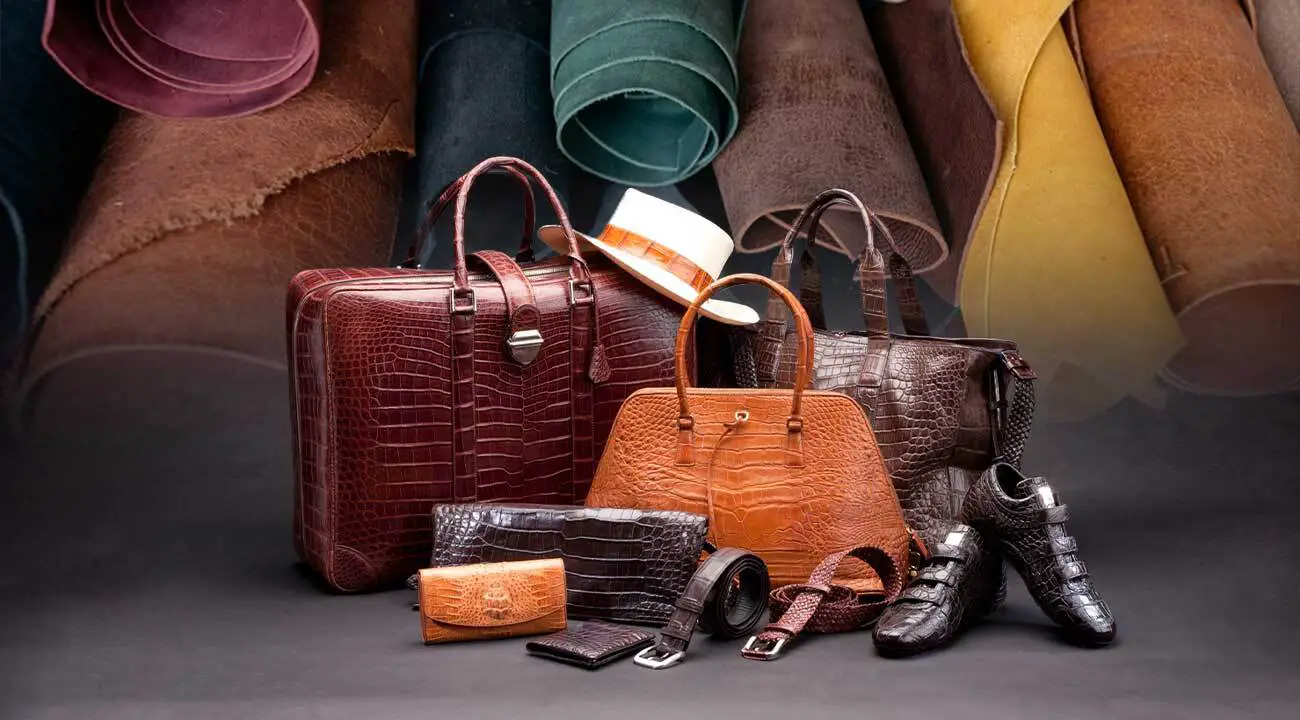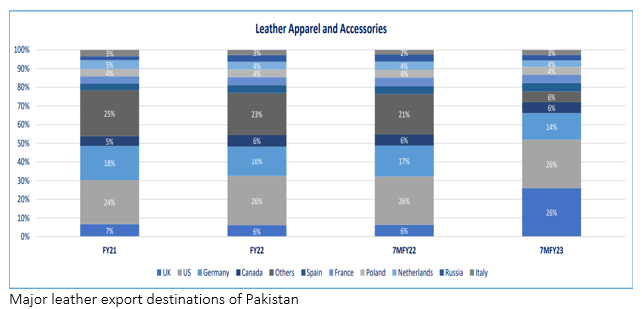INP-WealthPk

Muhammad Asad Tahir Bhawana
Pakistan's leather industry remains among the five largest export-oriented sectors because a number of the country’s leather products are available duty-free in the European Union, the largest consumer of leather goods globally, thanks to the Generalised Scheme of Preferences (GSP+). The other five largest export-oriented sectors are textiles, sports, surgical goods, and carpets.
According to Pakistan Tanners Association (PTA), the country’s leather industry exports 95% of its products. In FY22, leather products exports stood at Rs169 billion, registering an increase of 53% over Rs111 billion in FY21. The industry has seen a surge in demand as global and local economic activity resumed after the Covid-19 pandemic. However, during FY22, leather exports represented only 3% of the country's total exports, the PTA notes.
However, leather footwear exports grew in FY22 while all other leather product segments shrank due to a contraction in global demand. This was caused by record high inflation resulting from the Russia-Ukraine conflict. Pakistan’s leather footwear exports increased 17.2% in FY22 to $18 million from $17 million in FY21. Leather footwear exports stood at $9 million in the first 7MFY23. The top footwear export destinations are Saudi Arabia, the United Kingdom, Oman and the United States.

Major Pakistan’s leather footwear exports destinations
In US dollar terms, exports of leather products declined by 4% in the first eight months of the ongoing fiscal year (8MFY23) to $617 million compared to the same period of FY22. The 30% devaluation of Pakistani rupee against the US dollar during this period was the main factor contributing to the negative growth in export revenue.
A report released by the Pakistan Credit Rating Agency explains that in FY22 Pakistan's leather industry had a market size of Rs178 billion compared to Rs117 billion in FY21. This increase was due to an increase in the share of leather in the large-scale manufacturing index. Further, exports of tanned leather stood at $18 million in FY22, showing an increase of 12.9% year-on-year. However, tanned leather exports dropped 10% in 7MFY23 due to global recessionary conditions.
PTA says Pakistan’s leather value-added industry suffers from insufficient levels of advanced technology and unskilled labour force compared to its competitors, resulting in higher cost of production and low competitiveness. Additionally, there is hardly any effort to ensure strong presence of Pakistani leather products in the global fashion market. Increasing fashion consciousness, expanding market for leather garments and footwear in the untapped markets of the US, China, and other markets will help Pakistan compete at the global level.

Credit : Independent News Pakistan-WealthPk



